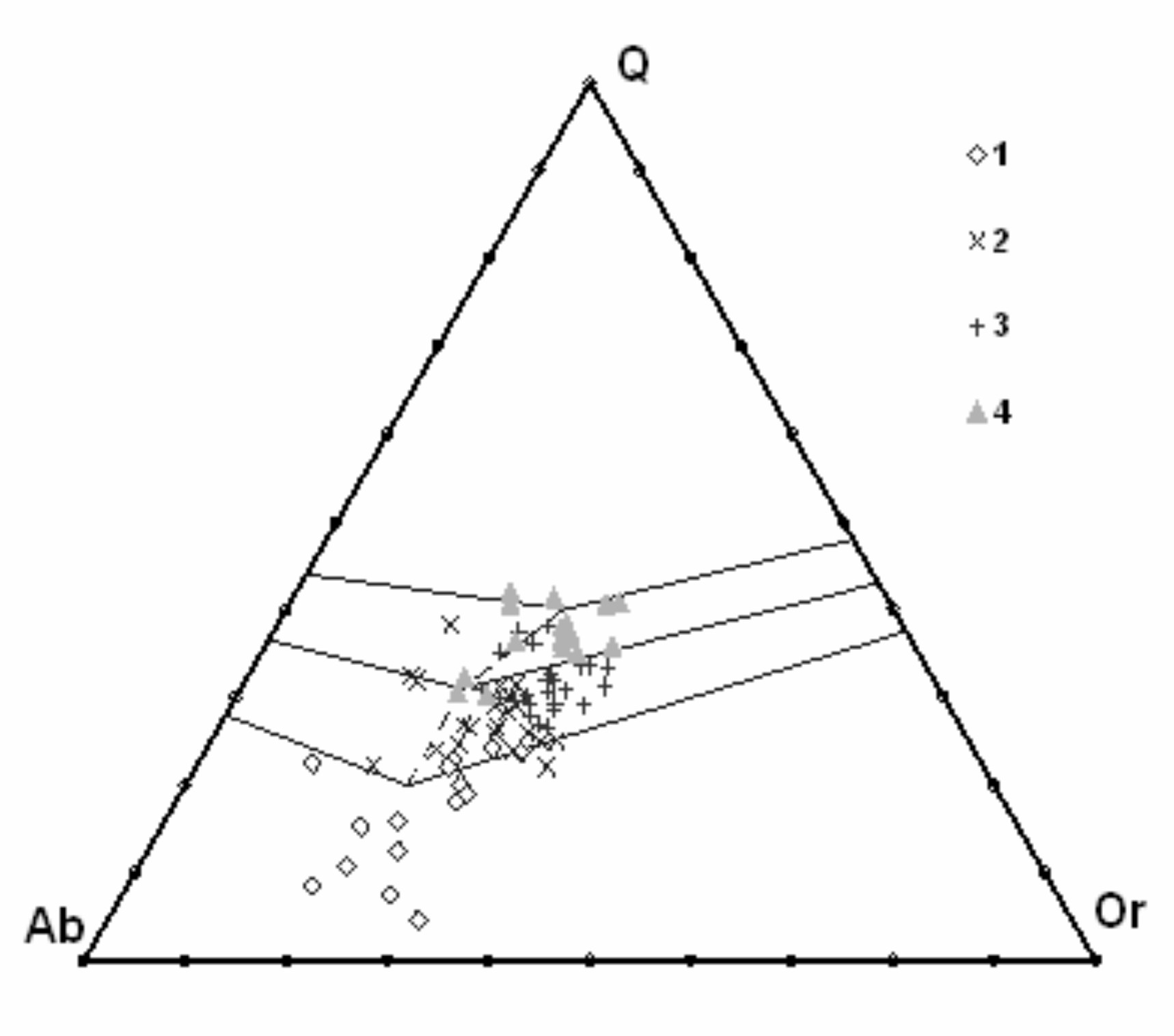|
KHANGAY BATHOLITH (CENTRAL MONGOLIA): GEOPHYSICAL AND GEOCHEMICAL ASPECTS OF FORMATION Turutanov Е.Kh.*, Grebenschikova V.I.**, Mordvinova V.V.* *Institute of the Earth’s Сrust SB RAS, Irkutsk, Russia, tur@crust.irk.ru **Institute of Geochemistry SB RAS, Irkutsk, Russia, vgreb@igc.irk.ru
The work was intended to identify the features of volumetric geometry and geochemical composition of rocks of density heterogeneities of granitic crust exemplified by the Khangay batholith - the largest granitoid batholith of Asia. Decompensated anomalies were used for interpretation of geophysical (gravimetric) data (Zorin et al., 1985). It is reasonable to attract them because in these anomalies the influence of local isostatic compensation is eliminated. It deforms gravitation effects of geological units causing drop of intensity. The calculations indicate that all great and smaller granite massifs, located within the zone of low values of gravitation field, merge at depth into one intrusive body. Its projection onto the Earth’s surface is over 100 000 sq. km. The pluton extends for about 700 km, with the width varying from 100 to 300 km (Fig. 1). Its vertical thickness varies along the strike from 2 to 15 km, making up on average 5-7 km.
Fig. 1. Scheme of isolines to show thickness of the Khangay granitoid batholith: 1- granitoids Pz; 2 - granitoids Mz; 3 – contours of batholith projection onto the Earth’s surface; 4 – isolines of thickness, km; 5 – lines of interpreted sections.
The pluton has steep contacts in the south-west and gentle contacts in the north-east. The intrusive body represents a sizable slab with intricately constructed base and subhorizontal roof. It is hard to attribute it to a certain shape of intrusive bodies, although considering the interpreted sections it is close to lopolite-like. The data on volumetric modeling suggest that specific feature of morphology of granite bodies located within the Khangay field of granitoids is that they are flat-shaped on the vertical line, though on some sites thickness of these bodies reaches 15 km. Configuration of the batholith shape is defined by a network of large faults, with the maximum thickness at the intersection sites. The rocks of the Khangay batholith vary in composition from gabbro to leucogranites and display the trend of normal alkalinity. On the norm-corresponding diagram albite-quartz-orthoclase the displacement of granodiorite composition points to the orthoclase angle indicate the initially cotectic granitoid melt and mesabyssal level of its formation (approximately at depth 15 km), which is confirmed by geophysical data. The compositions of granites and leucogranites are mostly approached to eutectic (Fig. 2). A gradual transition of granitoid composition proceeds from deeper varieties (diorites) to less deep (granodiorites and granites). Diversity of batholith rock compositions and available geochemical data on the distribution of potassium and rubidium contents (Fig. 3) and their correlation between each other represent evidence on duration of granitoid melt differentiation and, possibly, long-term emplacement of the Khangay batholith. The pattern of distribution of different elements in granodiorites of the Khangay batholith and comparison with the bulk composition of continental crust showed that their compositions lie within the area of the upper-middle continental crust, and the deep-seated source, which caused melting, could occur in the middle crust. The work was supported by the Integration project SB RAS № 6.17.
References Zorin Yu.А., Pismenny B.М., Novosjolova М.R., Turutanov Е.KhХ. Decompensated anomalies of gravity // Geology and Geophsyics, 1985, №8. P.104-108.
|


